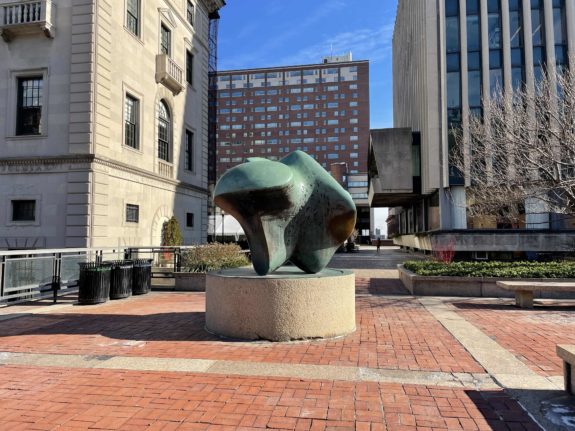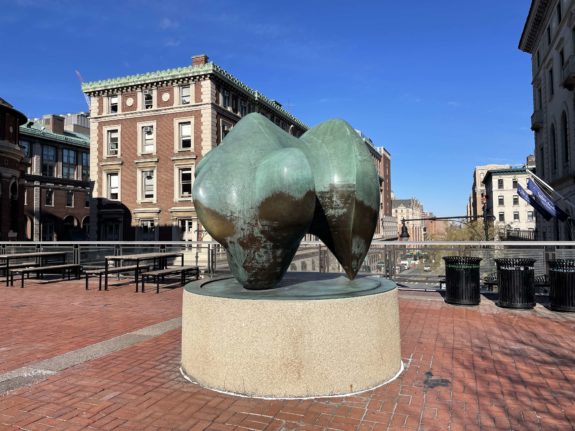Making points about Three-Way Piece No.1: Points.
Name: Three-Way Piece No.1: Points
Artist: Henry Moore (1898-1986) was a British artist whose work was often semi-abstract bronze sculptures. During his lifetime Moore also produced drawings, graphics, and even textiles. Born as the seventh of eight children, his family struggled with poverty. At a young age, Moore expressed interest in becoming a sculptor and exhibited notable skills as early as secondary school. His parents were less keen on his decision to pursue a career in art. A soldier in the First World War he later studied at the Leeds School of Art and at the Royal College of Art in London. Early in his carer, he established a reclining figure as one of his major motifs. He would take up a teaching post at the Royal College Of Art and then as Head of the Department of Sculpture at the Chelsea School of Art. Over the course of his career, and in a similar progression to his contemporaries, Moore’s sculptures became more abstract. During the Second World War, he would become a salaried war artist. Starting in the 1950s, his work was becoming internationally renowned and sought after. He passed away in 1986.
The Image: A piece of flint with three prongs.
The Statue: Bronze. 6 feet tall. 7 Feet 8 Inch diameter. Rotatable and resting on a granite base. Patinated.
Where: Columbia’s version is positioned on the North part of Revson Plaza (the Law School Bridge). It overlooks Amsterdam Avenue. Other versions of the sculpture are in Fairmount Park, Philadelphia, and the Des Moines Art Center.
When: A preliminary plaster model of the sculpture was made in 1963. A larger model was made a year later. Afterward, the final cast was made for the bronze statues. Columbia’s version of Three-Way Piece No.1: Points was dedicated on October 3, 1973.
Why: Perhaps a marker for the various valid perspectives that coexist on campus, given the sculptures multiple orientations. The abstract design of the flint piece might also provide connotations of fire. On a less interpretive note, Moore is a well-known artist, and having a piece of fine art on campus certainly aligns with a collegiate interest.
All photos Three-Way Piece No.1: Points via Author


 0 Comments
0 Comments


